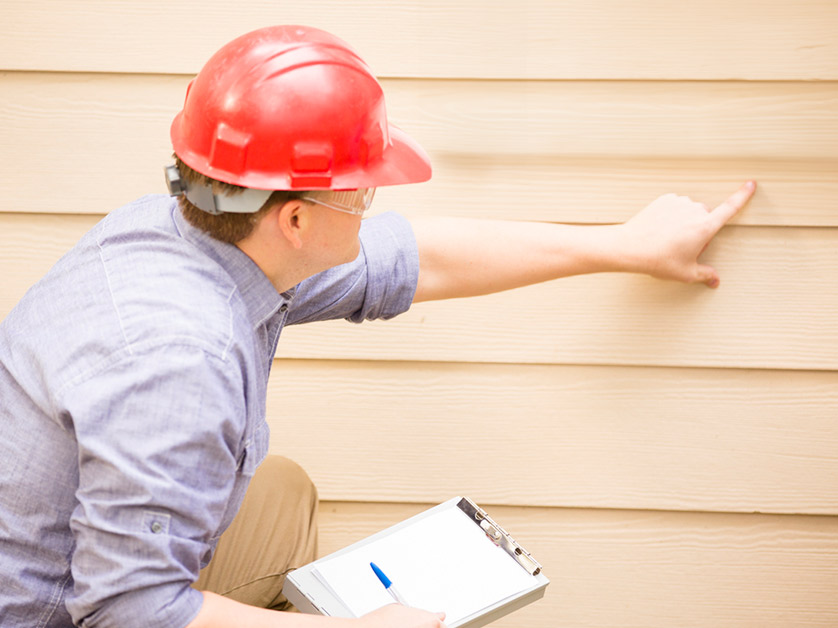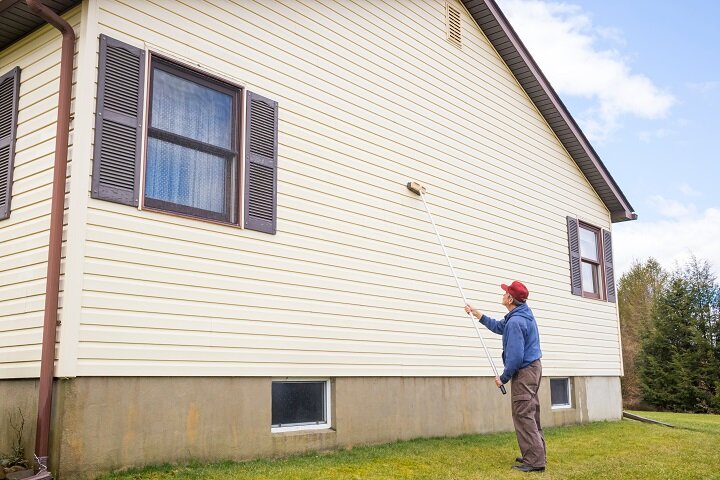The Essential Overview to the Different Kinds Of Home Siding and Their Unique Benefits
In the realm of home renovation, selecting the right exterior siding is an important decision that influences both aesthetic allure and functional efficiency. The variety of products offered, such as timber, plastic, fiber cement, steel, and brick, each offer unique advantages that accommodate different demands and choices. Comprehending these distinctions can dramatically enhance the durability and worth of a residential property - morris siding contractor. Nonetheless, with a lot of choices to think about, which house siding material genuinely sticks out for your specific task? Exploring these options can result in informed decisions that straighten with both design and practicality.
Wood Home Siding
Wood home siding, a prominent option for domestic outsides, provides a timeless aesthetic that integrates natural appeal with architectural honesty. This siding material is readily available in various designs, including clapboard, shingles, and board-and-batten, enabling house owners to personalize their appearance to match their style choices. Timber home siding is commonly crafted from durable varieties such as cedar, redwood, or yearn, which are known for their durability and ability to hold up against environmental stress factors.
One of the main advantages of wood exterior siding is its excellent insulation buildings, which can add to energy effectiveness and lower home heating prices. Furthermore, timber siding is biodegradable, making it an eco-friendly option when sourced sustainably. Routine maintenance, including painting or staining, can prolong its lifespan and improve its appearance, permitting house owners to maintain the all-natural beauty of the wood.
Nonetheless, prospective disadvantages include susceptibility to pests, rot, and weather condition damages, necessitating sufficient treatment and maintenance - morris siding contractor. Despite these concerns, when properly cared for, wood exterior siding can give a beautiful and durable option that improves the character of a home while supplying a warm, inviting environment

Plastic Exterior Siding
Vinyl exterior siding has emerged as a leading selection for property owners looking for a low-maintenance outside choice that incorporates resilience and cost. This flexible material is crafted from polyvinyl chloride (PVC), making it resistant to different climate condition, including moisture and UV rays. As an outcome, vinyl home siding does not warp, rot, or discolor, ensuring lasting visual allure.
Among the primary benefits of plastic home siding is its considerable variety of styles and shades, enabling house owners to attain the preferred seek their residential or commercial property without the need for regular repainting. Furthermore, vinyl home siding is simple to set up, which can dramatically lower labor expenses during building and construction or remodelling tasks.
Vinyl home siding also contributes to energy effectiveness. Many choices function insulation support, which boosts thermal performance, assisting to keep comfortable indoor temperature levels and potentially decreasing power bills. Its smooth surface area assists in very easy cleansing, needing only regular cleaning with a garden pipe to eliminate dust and particles.
Fiber Cement House Siding
Fiber cement house siding has actually gotten traction amongst contractors and homeowners alike as a result of its remarkable mix of durability and visual convenience. Composed of a mixture of cement, cellulose, and sand fibers, this siding alternative is crafted to endure severe weather, including high winds, heavy rain, and temperature variations, making it a durable choice for property exteriors.

One of the main advantages of fiber cement exterior siding is its resistance to parasites, such as termites, and its non-combustible nature, offering boosted fire security. morris siding contractor. In addition, it is available in a wide variety of styles, textures, and colors, permitting home owners to accomplish their wanted visual without compromising efficiency
One more advantage is its reduced upkeep demands; fiber cement siding usually requires paint or discoloration every 5-10 years, which is less frequent than other products. Its longevity adds to a lower general cost of ownership, as it minimizes the need for frequent repair work or replacements.
Eventually, fiber cement home siding represents a superb investment for those looking for a durable, eye-catching, and flexible outside alternative, incorporating both form and function to boost the home's aesthetic charm.
Steel Exterior Siding
The allure of metal siding depends on its robust resilience and modern aesthetic appeal, making it a favored selection for contemporary style. Readily available in products such as aluminum and steel, steel home siding supplies a variety of colors and surfaces, enabling homeowners to achieve a tailored appearance that complements their style vision.

Power performance is one more Get More Info considerable benefit, as lots of steel home siding products are developed with insulation alternatives that help regulate indoor temperatures. This can result in minimized energy prices in time. Additionally, steel siding is commonly recyclable, making it an eco-friendly selection for sustainability-minded property owners.
The setup process for steel siding can be fairly simple, resulting in a quicker turnaround time for construction jobs. Generally, metal house siding integrates performance and style, making it a useful option for those seeking a long-lasting and visually appealing exterior finish.
Brick and Stone Home Siding
Block and rock siding attracts attention as a timeless choice that improves the aesthetic charm of any kind of home. Known for their longevity and reduced upkeep, these materials supply a phenomenal roi while elevating the residential property's visual allure. Available in different colors, structures, and patterns, block and rock can be tailored to fit diverse building styles, from traditional to contemporary.
One of the main advantages of block and rock home siding is their energy efficiency. see this Both materials possess natural insulating properties that assist control indoor temperatures, possibly lowering cooling and heating prices. Additionally, they provide remarkable fire resistance compared to other exterior siding alternatives, contributing to boosted security.
An additional advantage is their long life. Brick and stone can last for years, typically requiring minimal upkeep past occasional cleaning. Unlike timber home siding, they are unsusceptible parasites and rot, making sure a long-lasting exterior that endures the components.
Final Thought
In recap, the option of house siding dramatically influences a home's visual allure, power effectiveness, and upkeep demands. Each sort of exterior siding-- whether timber, vinyl, fiber cement, steel, or block and rock-- provides unique benefits customized to different homeowner choices and environmental problems. Recognizing these choices enables informed choices that enhance both the durability and visual appeal of domestic outsides. Ultimately, selecting the appropriate exterior siding is crucial for achieving a balance between capability and design in read what he said domestic style.
One of the key benefits of wood exterior siding is its superb insulation properties, which can add to energy effectiveness and reduced home heating prices. Additionally, wood home siding is naturally degradable, making it an environmentally pleasant option when sourced sustainably.One of the primary benefits of metal house siding is its resistance to numerous ecological variables.Power efficiency is an additional considerable advantage, as several steel house siding products are created with insulation options that assist regulate indoor temperature levels. Each kind of home siding-- whether timber, plastic, fiber steel, cement, or block and rock-- offers one-of-a-kind advantages tailored to different homeowner preferences and ecological problems.